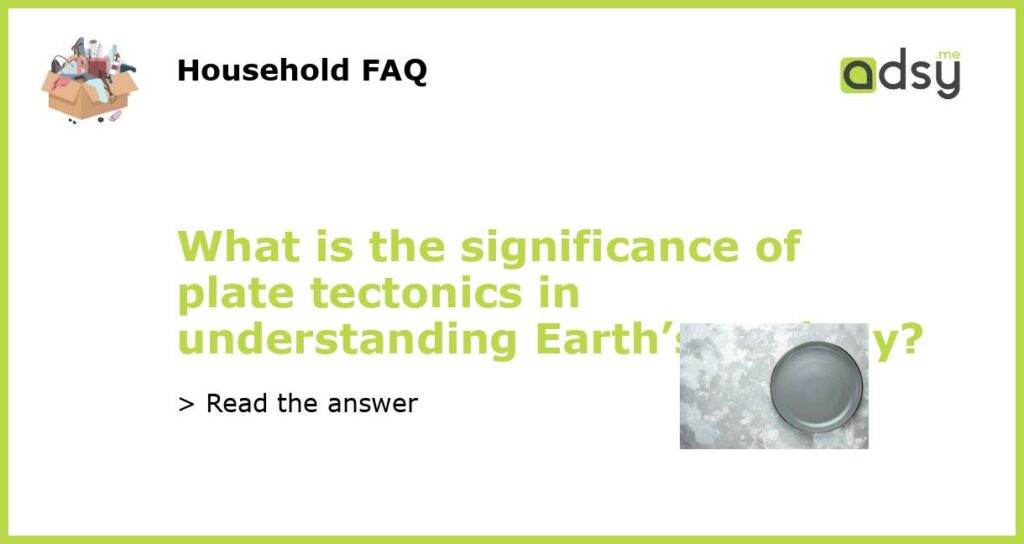The significance of plate tectonics in understanding Earth’s geology
Plate tectonics is a scientific theory that explains the movement and behavior of Earth’s lithosphere, or outermost layer. It has completely revolutionized our understanding of how our planet works, providing a framework to interpret and explain a wide range of geologic phenomena. Plate tectonics helps us make sense of volcanic eruptions, earthquakes, mountain building, and the distribution of continents and oceans. By studying plate tectonics, scientists can gain insight into the past and future of Earth’s geology.
Understanding the movement of Earth’s crust
Plate tectonics describes the movement of Earth’s crustal plates, which are large, rigid pieces of the lithosphere that fit together like a jigsaw puzzle. There are several types of plate boundaries, including divergent, convergent, and transform boundaries. At divergent boundaries, plates move apart, causing new crust to form. This process is responsible for the creation of oceanic ridges and rift valleys. At convergent boundaries, plates collide, resulting in the formation of mountain ranges and the destruction of oceanic crust through subduction. Transform boundaries occur when plates slide past each other horizontally, causing earthquakes. By understanding these different types of plate boundaries, scientists can explain the occurrence of geologic events in specific regions.
Explaining the distribution of earthquakes and volcanic activity
One of the most significant aspects of plate tectonics is its ability to explain the distribution of earthquakes and volcanic activity around the world. Earthquakes occur along plate boundaries, particularly at convergent and transform boundaries, where the movement of plates generates stress and strain on the crust. Similarly, volcanic activity is concentrated at plate boundaries, particularly at convergent boundaries where subduction occurs and at divergent boundaries where new crust is formed. Without the understanding provided by plate tectonics, it would be difficult to explain why some regions, such as the Pacific Ring of Fire, are prone to frequent earthquakes and volcanic eruptions, while others are relatively stable.
Unraveling Earth’s geological history
Plate tectonics has also revolutionized our understanding of Earth’s geological history. Through the study of paleomagnetism and the age of rocks, scientists have been able to reconstruct the positions of continents and oceans throughout Earth’s history. This has led to the development of the theory of continental drift, which suggests that the continents were once joined together in a supercontinent called Pangaea. Plate tectonics provides a mechanism for explaining how Pangaea broke apart and how the continents have moved over time. By understanding the movements of tectonic plates in the past, scientists can also make predictions about future plate movements and the potential formation of new supercontinents.
Implications for natural hazards and natural resource exploration
The study of plate tectonics has important implications for understanding and mitigating natural hazards, such as earthquakes and volcanic eruptions. By mapping plate boundaries and studying their behavior, scientists can identify areas that are at higher risk for these types of events. This information is essential for planning and building infrastructure in earthquake-prone regions. Additionally, plate tectonics plays a crucial role in the exploration and extraction of natural resources. Many valuable mineral deposits, such as gold and copper, are associated with plate boundaries and tectonic activity. By understanding the processes that concentrate these resources, geologists can make more informed decisions about where to search for valuable deposits and how to extract them sustainably.






